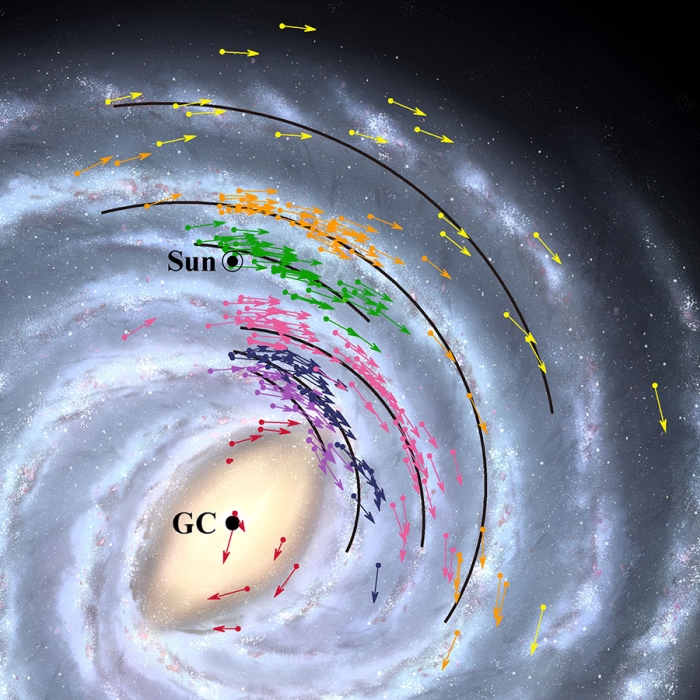According to a new map of the Milky Way galaxy, the Solar System's position isn't where we thought it was. Not only is it closer to the galactic centre - and the supermassive hole therein, Sagittarius A* - it's orbiting at a faster clip.It's nothing to be concerned about; we're not actually moving closer to Sgr A*, and we're in no danger of being slurped up. Rather, our map of the Milky Way has been adjusted, more accurately identifying where we have been all along.
And the survey beautifully demonstrates how tricky it is to map a galaxy in three dimensions from inside it.
It's a problem that has long devilled our understanding of space phenomena. It's relatively easy to map the two-dimensional coordinates of stars and other cosmic objects, but the distances to those objects is a lot harder to figure out.
And distances are important - they help us determine the intrinsic brightness of objects. A good recent example of this is the red giant star Betelgeuse, which turned out to be closer to Earth than previous measurements suggested. This means that it's neither as large nor as bright as we thought.
Another is the object CK Vulpeculae, a star that exploded 350 years ago. It's actually much farther away, which means that the explosion was brighter and more energetic, and requires a new explanation, since previous analyses were performed under the assumption it was relatively low energy.But we're getting better at calculating those distances, with surveys using the best available technology and techniques working hard to refine our three-dimensional maps of the Milky Way, a field known as astrometry. And one of these is the VERA radio astronomy survey, conducted by the Japanese VERA collaboration.
VERA stands for VLBI (Very Long Baseline Interferometry) Exploration of Radio Astrometry, and it uses a number of radio telescopes across the Japanese archipelago, combining their data to effectively produce the same resolution as a telescope with a 2,300 kilometre- (1,430 mile-) diameter dish. It's the same principle behind the Event Horizon Telescope that produced our very first direct image of a black hole's shadow.
VERA, which started observing in 2000, is designed to help us calculate the distances to radio-emitting stars by calculating their parallax. With its incredible resolution, it observes these stars for over a year, and watches how their position changes relative to stars that are much farther away as Earth orbits the Sun.

This change in position can then be used to calculate how far a star is from Earth, but not all parallax observations are created equal. VLBI can produce much higher resolution images; VERA has a breathtaking angular resolution of 10 millionths of an arcsecond, which is expected to produce extraordinarily high precision astrometry measurements.
And this is what astronomers have used to refine our Solar System's position in the Milky Way. Based on the first VERA Astrometry Catalog of 99 objects released earlier this year, as well as other observations, astronomers created a position and velocity map of those objects.From this map, they calculated the position of the galactic centre.
In 1985, the International Astronomical Union defined the distance to the galactic centre as 27,700 light-years. Last year, the GRAVITY collaboration recalculated it and found it closer, just 26,673 light-years away.

The VERA-based measurements bring it closer still, to a distance of just 25,800 light-years. And the Solar System's orbital speed is faster, too - 227 kilometres (141 miles) per second, rather than the official velocity of 220 kilometres (137 miles) per second.
That change may not seem like much, but it could have an impact on how we measure and interpret activity in the galactic centre - ultimately, hopefully, leading to a more accurate picture of the complex interactions around Sgr A*.
Meanwhile, the VERA collaboration is forging ahead. Not only is it continuing to make observations of objects in the Milky Way, it's joining up with an even larger project, the East Asian VLBI Network. Together, astronomers hope, the telescopes involved in this project could provide measurements of unprecedented accuracy.
The Vera Astrometry Catalog was published in the Publications of the Astronomical Society of Japan.



No comments:
Post a Comment